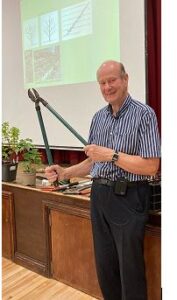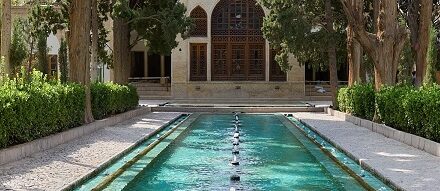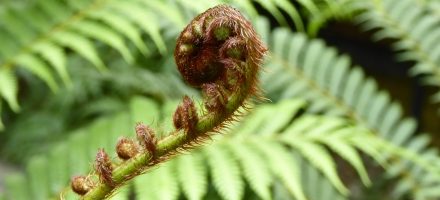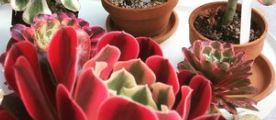PRUNING: The Why, What, When and the How
On Tuesday, 30 May, ODGC welcomed Philip Aubury, former Director of Birmingham Botanic Garden to give a masterclass with practical demonstrations on the art of pruning.
 Why? To maintain the shape and size of a plant, to rejuvenate an elderly plant, to admit light and air to help prevent disease, to control as in hard pruning to provide colourful shoots, eg Cornus and to provide better quality in flower and fruit.
Why? To maintain the shape and size of a plant, to rejuvenate an elderly plant, to admit light and air to help prevent disease, to control as in hard pruning to provide colourful shoots, eg Cornus and to provide better quality in flower and fruit.
What to prune? Dead, diseased or damaged shoots, crossing and overcrowded branches, suckers and branches of variegated shrubs and trees that have reverted to plain green. The latter contain more chlorophyll and will become dominant if unpruned.
When? The rule of thumb is to prune early flowerers immediately after flowering and late bloomers in autumn or winter.
How? With a variety of tools which Philip brought with him. These included secateurs, loppers, saws, shears, pole pruners and a must have gadget for deadheading called a Darlac Snapper which grips and holds the spent bloom.
Philip demonstrated how to cut a winter pruned shrub just above a dormant bud and explained that when cutting a tree branch it is important to saw back to the branch collar to leave a ring of cambium which reduces the size of the wound, preventing infection.
Most apples are grown on semi dwarfing rootstocks and it is important to prune out crowded shoots in late winter to maintain an open centre, increasing air circulation. Plums and other stoned fruit should be pruned in summer to prevent bleeding of sap whereby silver leaf disease can enter. Summer raspberries should have the old canes removed in autumn and new canes tied in, autumn raspberries should be pruned to ground level. Loganberries require autumn pruning to alternate sides and the fruiting shoots tied in horizontally.
Pruning, when and how, is a knotty problem and questions came thick and fast and all were answered in great detail by Philip, clearly a master of his craft.
Ghislaine Arundale










